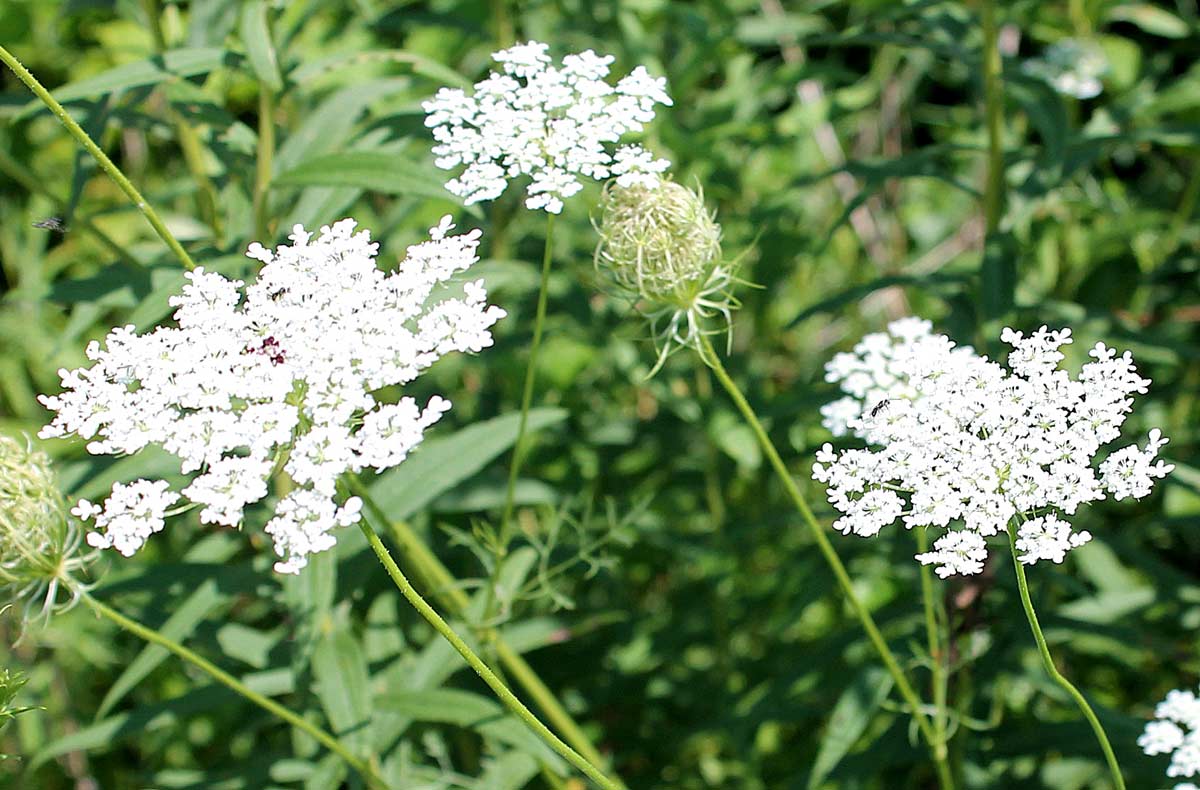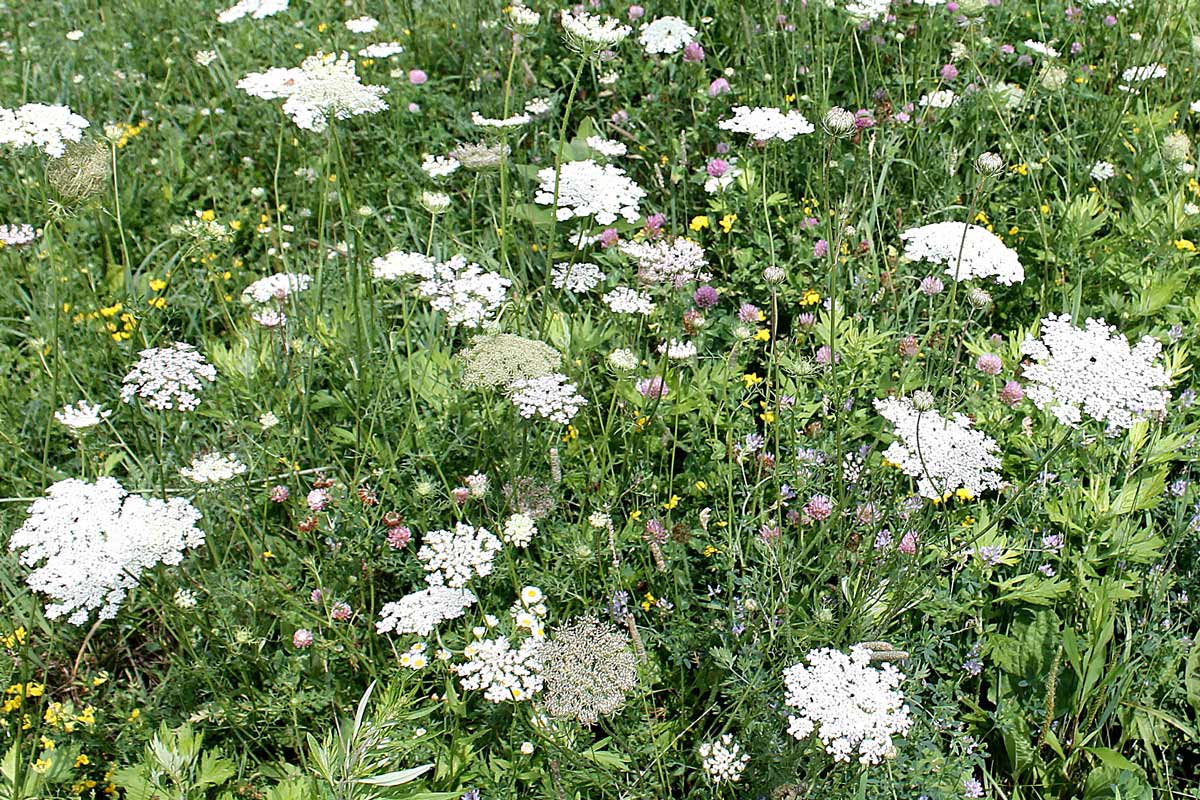How to Control Wild Parsnip
Watch out - contact with the sap of this invasive plant plus sunlight can cause an intense burning and blistering rash. Learn why and how to control it.
Look out over most any field, roadside, or untended sunny land in mid to late summer, and you’ll likely see colonies of the familiar tall, white, umbrella-like flowers of wild carrot swaying in the breeze.
Also known as Queen Anne’s lace, this plant shows up throughout the United States – and has earned noxious-weed status in at least 35 of them.
Besides being a rampant seeder that can out-compete more desirable native plants, wild carrot is moderately toxic to grazing cattle and can cause skin rashes in some people.
It has the same ferny look as the potentially deadly poison hemlock plant and has the same skin-allergenic compounds as two of our worst rash-causing plants – giant hogweed and wild parsnips.
But like most plants generally considered to be weeds, wild carrot has some redeeming qualities.
For one thing, it’s the mother plant for what became the cultivated version of our orange-rooted, grocery-store or garden-grown carrot.
It also makes a good cut flower. And its flowers and foliage are attractive to some butterflies and bees.

Wild carrots have white, umbrella-like flowers, often with a single dark red-purple spot in the center as can be seen in the flower at left. George Weigel
Wild carrot (Daucus carota) is a biennial plant, meaning it produces clumps of foliage in the first year and then sends up flowering stalks followed by seeds in year two. The second-year plants then die.
Seeds sprout in spring, growing into light-green first-year plants that form low clumps or “rosettes” of fern-like, lacy foliage. Plants typically stay green over that first winter, then produce flower stalks that rise two to three feet above the clumps in the second summer.
White, umbrella-like flowers – two to four inches wide – bloom from July through September. Both the stalks and leaf stems are hollow, and the stems have distinctive little hairs on them.
A distinguishing trait of the flowers is that most wild-carrot floral “umbrellas” have one small dark red-purple flower in the center of each white umbrella.
Brushing the foliage will give off a familiar scent of carrots.
Wild carrot gets its nickname from its tell-tale lacy foliage that reportedly links back to Queen Anne, a 17th-century Danish queen. One story is that the queen once challenged the citizenry to a lace-making competition, but none could beat her. Another is that villagers believed nature was decorating the roadsides with a flower that happened to bloom at the same time the queen did most of her traveling.
Seeds of the wild carrot made their way from Europe, Asia, and northern Africa centuries ago. The cold-hardy plants quickly fanned out throughout the new world and continued to spread via wind and the fur and feathers of small mammals and birds.
Wild carrot favors sunny, dry areas, making it a common staple of pastures, meadows, and roadsides as well as home landscapes.

Wild carrots are a familiar summer sight, blooming especially in dry, sunny, untended spots. George Weigel
Wild carrot spreads primarily by seeds. Each plant can produce thousands of viable seeds (up to 40,000 per plant, by one estimate), and those seeds can survive as long as 20 years buried in the ground.
Because of that strong seeding ability, step one in controlling a wild-carrot problem is eliminating plants before the flowers have a chance to set seed.
Existing plants can be dug, pulled, or mowed, or they can be sprayed with a variety of broad-leaf and/or non-selective weed-killers, including 2,4-D, triclopyr, or glyphosate. Check product labels for usage directions and to make sure wild carrot (or Queen Anne’s lace) is listed.
If plants are flowering, it’s best to bag and remove them since leaving dead plants in place can still allow mature seeds to drop.
Wear gloves and other skin protection if hand-pulling since the foliage can cause a rash.
Wild carrots germinate best in disturbed soil, so avoiding tilling and digging to the extent possible.
Another strategy is “beating wild carrots to the punch” by covering all bare soil with groundcovers or similar dense covers of desired plants so there’s no space for wild carrots to move in.
A third option is covering all bare soil with two or three inches of mulch, which denies sunlight and discourages wild-carrot (and other weed seeds) from sprouting.
And a fourth strategy is applying granular weed preventers to keep new wild carrots from invading existing beds.
Preen Extended Control Weed Preventer is labeled for the control of wild carrots in landscape beds. Two applications per year – once in spring and once six months later in fall – give season-long control of wild carrot and more than 100 other common weeds, including dandelions, chickweed, pigweed, and crabgrass.
The product can be applied around of hundreds of existing landscape plants. (The label lists plant-by-plant specifics.)
Preen Mulch with Extended Control Weed Preventer is a two-action bagged product that combines wood mulch with a wild-carrot preventer.
It’s best put down once in early spring, before wild-carrot seeds germinate.